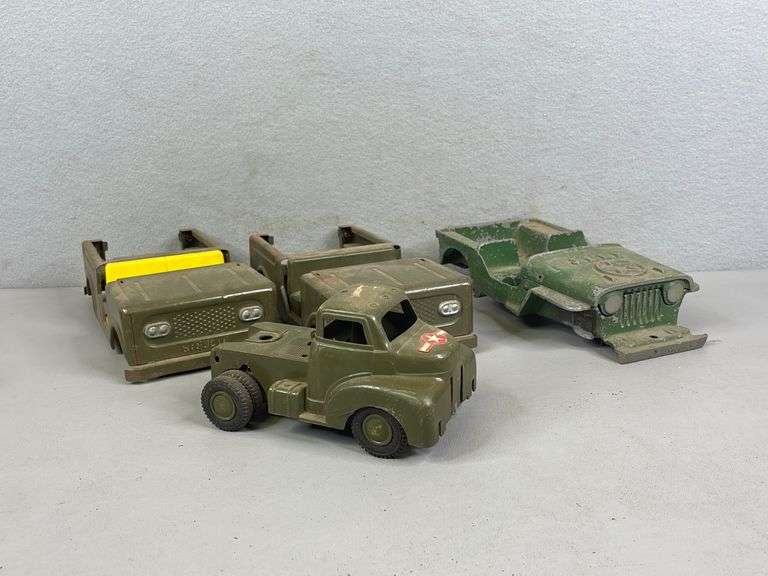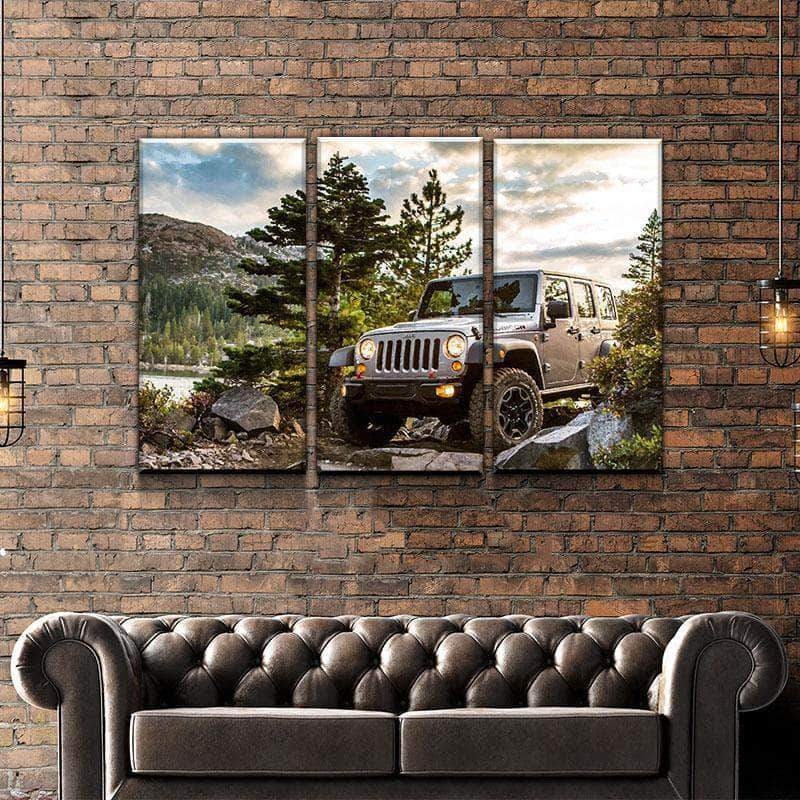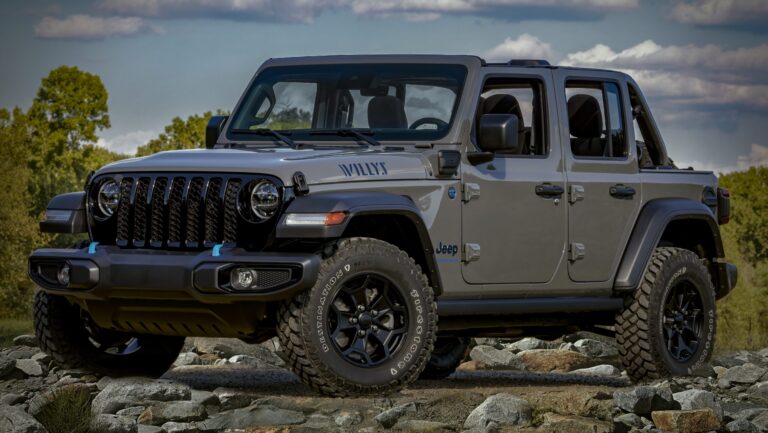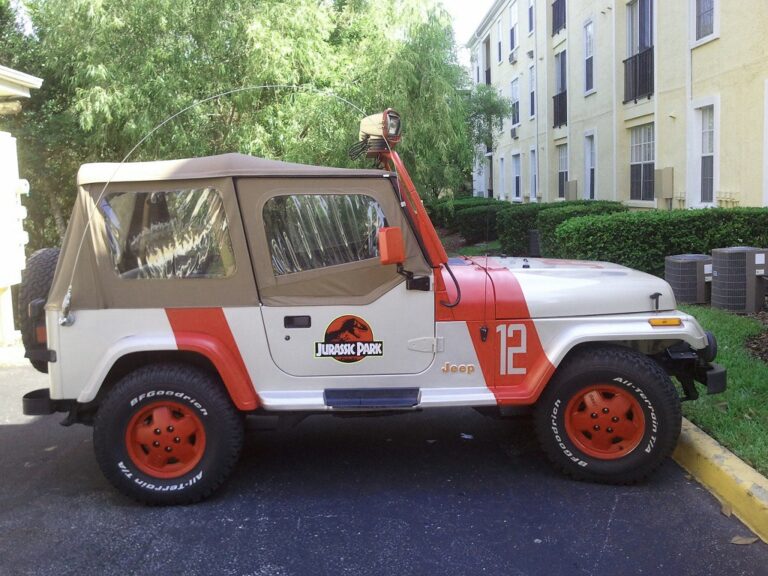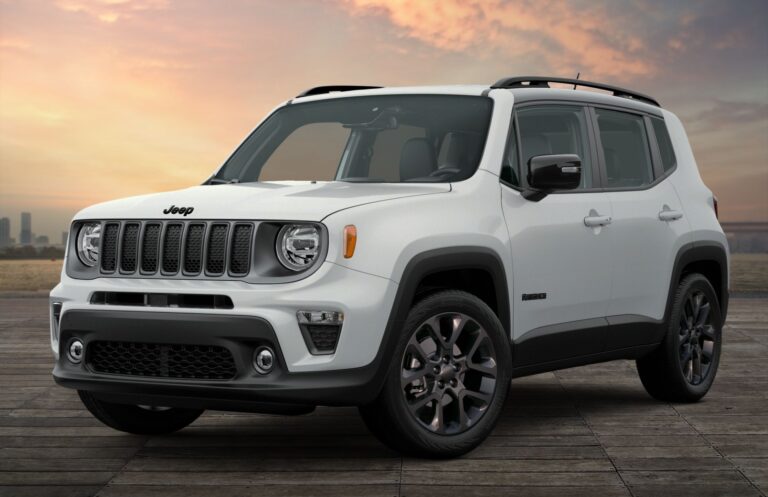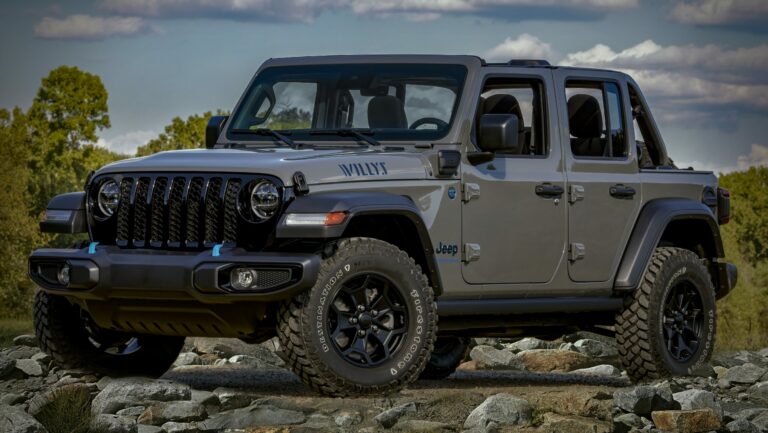Used Jeep Frames For Sale: The Backbone of Your Next Off-Road Adventure or Restoration Project
Used Jeep Frames For Sale: The Backbone of Your Next Off-Road Adventure or Restoration Project jeeps.truckstrend.com
The iconic Jeep, a symbol of freedom, adventure, and rugged capability, is more than just a vehicle; it’s a lifestyle. At the heart of every classic or custom Jeep lies its sturdy frame – the unsung hero that provides structural integrity, supports all components, and withstands the rigors of on-road driving and challenging off-road terrains. For enthusiasts, restorers, and custom builders, the availability of used Jeep frames for sale opens up a world of possibilities, offering a cost-effective and practical solution for breathing new life into a beloved classic or building a unique off-road machine from the ground up.
This comprehensive guide delves into everything you need to know about purchasing a used Jeep frame. From understanding its importance and identifying the right type for your project, to navigating the market, performing thorough inspections, and tackling common challenges, we’ll equip you with the knowledge to make an informed decision and embark on your next Jeep adventure with confidence.
Used Jeep Frames For Sale: The Backbone of Your Next Off-Road Adventure or Restoration Project
Why Consider a Used Jeep Frame? Benefits and Applications
A Jeep frame isn’t just a piece of metal; it’s the foundation upon which your entire vehicle is built. Opting for a used frame can offer significant advantages, making it a popular choice for various projects:
- Cost Savings: Purchasing a used frame is often significantly cheaper than sourcing a new aftermarket frame or buying an entire donor vehicle, especially for older, out-of-production models. This can dramatically reduce the overall cost of your project.
- Restoration Projects: For owners of classic Jeeps like the CJ series (CJ-5, CJ-7, CJ-8 Scrambler) or early Wranglers (YJ, TJ) suffering from severe frame rust or damage, a solid used frame is indispensable. It allows you to restore the vehicle to its original glory without compromising structural integrity.
- Custom Builds and Modifications: The body-on-frame design of Jeeps makes them ideal candidates for extensive customization. A used frame provides a robust and versatile starting point for building a dedicated rock crawler, an overland expedition vehicle, or a unique street rod. You can reinforce it, add custom suspension mounts, or stretch it to fit a specific vision.
- Repairing Accident or Rust Damage: If your existing Jeep frame has been bent in an accident or has succumbed to severe corrosion, replacing the entire frame is often a safer and more effective solution than attempting extensive repairs on a compromised structure.
- Availability for Older Models: For vintage Jeeps, finding new replacement frames can be difficult, if not impossible. The used market, particularly from salvaged vehicles or parted-out projects, often provides the only avenue for acquiring these critical components.

Understanding Jeep Frame Types and Compatibility
Jeep frames, while all sharing a basic ladder-style construction, have evolved significantly over the decades. Understanding the differences and ensuring compatibility is paramount before making a purchase.
Jeeps are primarily known for their robust body-on-frame construction, where the body sits separately on a rigid steel frame. This design contributes to their durability and ease of modification. Here are some common Jeep models and key characteristics of their frames:
- CJ Series (CJ-2A, CJ-3A/B, CJ-5, CJ-7, CJ-8 Scrambler): Spanning from the 1940s to the 1980s, CJ frames are generally simpler in design, often utilizing leaf spring suspension mounts. They are known for their rugged simplicity but are also highly susceptible to rust due to their age. Frame lengths vary significantly between models (e.g., CJ-5 is shorter than CJ-7).
- YJ Wrangler (1987-1995): The first "Wrangler," the YJ continued the leaf spring tradition of the CJ but introduced a slightly wider and more refined frame. These frames are also prone to rust, particularly in the rear section and near suspension mounts.
- TJ Wrangler (1997-2006): A significant leap forward, the TJ introduced coil spring suspension, offering a much-improved ride quality and greater articulation for off-roading. TJ frames are highly sought after for builds due to their coil spring setup and relatively modern design. The LJ (Wrangler Unlimited, 2004-2006) is essentially a TJ frame with an extended wheelbase, offering more cargo space and a smoother ride.
- JK Wrangler (2007-2018): With a larger footprint and more sophisticated suspension geometry, the JK frame is more robust and designed for modern safety standards. It’s significantly different from its predecessors.
- JL Wrangler (2018-Present): The latest iteration, the JL frame is even more refined, lighter, and stronger, incorporating advanced materials and design for improved performance and safety.

![]()
Crucial Compatibility Note: While it might be tempting to mix and match, swapping frames between different Jeep generations (e.g., putting a TJ body on a CJ frame or vice-versa) is a highly complex undertaking. It typically requires extensive fabrication, custom body mounts, suspension modifications, and often involves legal challenges related to VIN and vehicle registration. For most projects, sticking to a frame compatible with your specific Jeep model and year range is the most practical and cost-effective approach.
Where to Find Used Jeep Frames For Sale
The market for used Jeep frames is diverse, ranging from individual sellers to specialized businesses. Knowing where to look can save you time and money:
- Online Marketplaces: Websites like eBay, Craigslist, and Facebook Marketplace are popular platforms where individuals and small businesses list used parts. Use specific search terms like "Jeep CJ7 frame," "TJ Wrangler frame," or "Jeep frame for sale." Be prepared to filter through many listings.
- Salvage Yards and Auto Wreckers: These are excellent sources for used frames. Many salvage yards specialize in specific makes or models. Visiting in person allows you to inspect the frame directly. Call ahead to inquire about their inventory.
- Specialized Jeep Part Dealers: Several businesses focus exclusively on parting out Jeeps and selling individual components. These dealers often have a more curated inventory and may offer some level of guarantee or a more detailed description of the frame’s condition.
- Off-Road Forums and Jeep Clubs: The Jeep community is vast and active. Online forums (e.g., JeepForum, Pirate4x4) and local Jeep clubs often have classified sections where members buy, sell, and trade parts. This can also be a great way to get advice and connect with knowledgeable individuals.
- Word of Mouth: Sometimes, the best deals come from unexpected sources. Let your friends, local mechanics, and fellow enthusiasts know what you’re looking for.
Inspecting a Used Jeep Frame: What to Look For
Purchasing a used frame is a significant investment, and its condition directly impacts the safety and longevity of your build. A thorough, hands-on inspection is absolutely critical. If possible, bring a knowledgeable friend or a mechanic.
- Rust: The #1 Enemy: Rust is the most common and devastating issue with older Jeep frames.
- Surface Rust vs. Pitting/Perforation: Surface rust (light, flaky orange) is generally manageable with wire brushing, grinding, and rust converter. Deep pitting, flaking, or holes indicate structural compromise.
- Common Rust Zones: Pay close attention to areas where water and dirt accumulate:
- Body Mounts: Especially where the frame rails meet the body mounts.
- Control Arm Mounts/Spring Perches: Critical for suspension integrity.
- Skid Plate Mounts: Often trap moisture.
- Rear Crossmember: A common failure point.
- Frame Rails: Check the top, bottom, and sides for any swelling or delamination (where layers of steel separate).
- Inside the Frame: Use a borescope or flashlight to look inside the frame rails, especially if they are boxed.
- Bends, Cracks, and Accident Damage:
- Straightness: Look down the frame rails from front to back. Any visible bends, twists, or kinks are red flags. Diagonal measurements from opposing corners should be equal. A professional frame shop can verify straightness if you have doubts.
- Cracks: Inspect all welds, seams, and high-stress areas (e.g., steering box mount, suspension mounts) for hairline cracks or larger fractures.
- Previous Repairs: Look for evidence of welding, patching, or straightening. Were the repairs done professionally? Shoddy welds, excessive grinding, or overlapping patches can indicate underlying structural issues.
- Mounting Points Integrity:
- Ensure all critical mounting points are intact, undamaged, and correctly aligned. This includes engine mounts, transmission mounts, transfer case mounts, suspension mounts (leaf spring perches or coil spring buckets), shock mounts, and steering box mounts. Stripped threads or elongated holes can be costly to repair.
- VIN and Legalities:
- VIN Tag: Most modern Jeep frames have a VIN (Vehicle Identification Number) stamped or tagged on them. Verify that the VIN is legible and matches any documentation provided.
- Title/Bill of Sale: Understand the legal requirements in your state or country for registering a vehicle built on a replacement frame. Some states require a clear title for the frame, while others are satisfied with a bill of sale. Always ensure you can legally use and register the frame for your project. Do a VIN check if possible to ensure it hasn’t been reported stolen or involved in a serious incident.
- Overall Condition: Assess the general cleanliness and signs of neglect. While cosmetic, a well-maintained frame suggests the previous owner took better care of the vehicle.
The Process: Purchasing and Transporting Your Used Frame
Once you’ve found a suitable frame and completed your inspection, the next steps involve negotiation and logistics.
- Negotiation: The price of a used frame varies wildly based on condition, model rarity, and location. Be prepared to negotiate, especially if you’ve identified minor issues during your inspection.
- Payment: Use secure payment methods. For local pickups, cash is common. For distant sellers, consider escrow services or secure online payment platforms.
- Logistics and Transport: This is often the most challenging aspect. Jeep frames are large, heavy, and awkward.
- Local Pickup: You’ll need a suitable vehicle – typically a truck with a long bed, a flatbed trailer, or even a U-Haul trailer. Ensure you have straps, chains, and proper tie-down equipment.
- Shipping: For frames purchased from a distance, freight shipping is necessary. Get multiple quotes from different freight companies. Be aware that shipping costs can sometimes exceed the cost of the frame itself. The seller will need to properly prepare the frame for shipment (e.g., on a pallet, wrapped).
Challenges and Solutions
While buying a used frame offers many advantages, it’s not without its potential pitfalls:
- Finding the "Right" Frame: Patience is key. A clean, straight frame for an older model is a rare gem. Don’t rush into a purchase; wait for the right one.
- Rust Remediation: Even "good" frames may have some surface rust. Plan for thorough cleaning (wire brushing, grinding, sandblasting), rust conversion, and a durable protective coating (e.g., POR-15, epoxy primer, chassis paint) to prevent future corrosion.
- Repairing Minor Damage: Small cracks or bent tabs can often be professionally repaired by a certified welder. However, extensive damage or critical structural components should lead you to pass on the frame.
- Legal Complications: Always verify VIN and titling requirements with your local Department of Motor Vehicles (DMV) or equivalent agency before you buy. This can prevent significant headaches down the road.
- Hidden Damage: Despite your best efforts, some issues might not be visible until you start working on the frame. Budget for potential unforeseen repairs or modifications.
Used Jeep Frames For Sale: Estimated Price Guide
Prices for used Jeep frames are highly variable based on condition, model rarity, geographic location, and market demand. The table below provides a general estimate; always conduct your own research and inspection.
| Jeep Model | Condition Category | Estimated Price Range (USD) | Notes |
|---|---|---|---|
| CJ-5/CJ-7 | Poor/Rusted | $300 – $800 | Often requires significant rust repair, patching, or section replacement. Good for parts or very intensive restoration. |
| Fair/Surface Rust | $800 – $1,500 | Usable, but expect to perform rust removal (wire brushing, grinding) and apply protective coatings. May have minor pitting. | |
| Good/Minimal Rust | $1,500 – $2,500+ | Solid frame, largely free of major rust or bends. Will require cleaning and painting. These are becoming rare. | |
| YJ Wrangler | Poor/Rusted | $400 – $900 | High risk of severe rust in common areas (rear section, spring mounts). Likely needs extensive repair. |
| Fair/Surface Rust | $900 – $1,800 | Common condition, expect some surface rust and potentially minor pitting. Usable for a restoration with proper prep. | |
| Good/Minimal Rust | $1,800 – $3,000+ | Increasingly difficult to find in this condition. A premium is usually paid for clean YJ frames. | |
| TJ Wrangler | Poor/Rusted | $500 – $1,200 | Often has significant rust near control arm mounts, skid plate mounts, and rear crossmember. Requires substantial repair or is suitable only for parts. |
| Fair/Surface Rust | $1,200 – $2,500 | Common on the used market. Expect surface rust and possibly some minor pitting. Good for most restoration or custom projects with proper rust remediation. | |
| Good/Minimal Rust | $2,500 – $4,000+ | Highly sought after, especially for the LJ (long wheelbase) models. Represents a significant investment but saves on repair time. | |
| JK Wrangler | Poor/Rusted | $800 – $2,000 | Less common to find severely rusted yet, but always check for accident damage, bends, or poor previous repairs. |
| Fair/Surface Rust | $2,000 – $3,500 | More modern construction generally means better condition. Surface rust might be present, but structural integrity is usually good. | |
| Good/Minimal Rust | $3,500 – $5,000+ | Often sourced from accident write-offs. Critical to verify straightness with a professional. Offers a very solid foundation for builds. | |
| JL Wrangler | Good/Minimal Rust | $4,000 – $7,000+ | Very new to the used market, almost exclusively from accident write-offs. Prices are higher due to modernity and relative scarcity. Professional inspection for straightness is paramount. |
Disclaimer: The prices listed above are estimates only and can vary widely. Factors such as exact model year, specific sub-model (e.g., Rubicon vs. Sport), geographical location, seller’s urgency, and the overall market demand will significantly influence the final price. These estimates do not include shipping costs, which can add hundreds to over a thousand dollars depending on distance and carrier.
Frequently Asked Questions (FAQ) About Used Jeep Frames
Q1: Is it legal to buy a used Jeep frame and build a vehicle on it?
A1: Yes, it is generally legal, but the specifics vary significantly by state or country. You’ll need a clear bill of sale for the frame, and you may need to register it as a "reconstructed" or "assembled" vehicle, potentially requiring a state-issued VIN. Always check with your local Department of Motor Vehicles (DMV) or equivalent agency before purchasing.
Q2: How can I tell if a used frame is straight and not bent?
A2: A visual inspection for obvious kinks or twists is the first step. You can also measure diagonally from opposing corners of the frame – the measurements should be identical. For absolute certainty, a professional frame shop can put it on an alignment bench and provide a precise measurement report.
Q3: What’s the biggest risk when buying a used frame?
A3: The biggest risks are hidden rust damage (especially inside boxed sections) and undisclosed accident damage that has compromised the frame’s structural integrity or straightness. A thorough, in-person inspection is crucial.
Q4: Can I put a TJ body on a CJ frame, or vice-versa?
A4: While technically possible with extensive fabrication, it is highly impractical and costly for most builders. Frame dimensions, body mounts, and suspension mounting points differ significantly between generations. It’s generally advised to stick to a frame that matches your specific Jeep model and year range for ease of assembly and legal compliance.
Q5: Should I paint or coat my used frame after purchase?
A5: Absolutely. After thoroughly cleaning and removing any existing rust, applying a high-quality rust-inhibiting primer and a durable chassis paint or protective coating (like POR-15, epoxy primer, or bed liner material) is essential. This protects your investment from future corrosion and ensures longevity.
Q6: How much does it cost to ship a Jeep frame?
A6: Shipping costs can vary widely depending on distance, carrier, and whether it’s shipped to a commercial or residential address. Expect to pay anywhere from a few hundred dollars for regional transport to over a thousand dollars for cross-country shipping. Always get a freight quote before committing to a purchase from a distant seller.
Conclusion
The pursuit of a used Jeep frame for sale is more than just a transaction; it’s the foundational step in a journey of restoration, customization, or repair. It offers a cost-effective gateway to revitalizing a classic, building a bespoke off-road beast, or simply getting your beloved Jeep back on the trail.
While the allure of a good deal is strong, diligence is paramount. A thorough inspection for rust, bends, and previous repairs, coupled with a clear understanding of legal implications, will safeguard your investment and ensure the safety and success of your project. With careful planning and informed decisions, that used Jeep frame can truly become the sturdy backbone of your next great adventure.
